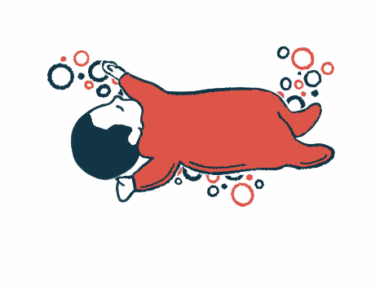Case series illustrates challenges in getting diagnosis for AIP women
Misdiagnoses common despite distinct signs of nerve damage
Written by |

A case series from Saudi Arabia highlights the challenges sometimes faced by women with acute intermittent porphyria (AIP) in getting a correct diagnosis — even with distinct clinical signs of acute neuropathy, or nerve damage.
Indeed, five of the six women whose cases were detailed first received an incorrect diagnosis, despite signs of AIP that included preservation of certain nerve fibers and allodynia, the study showed. Allodynia occurs when a normally nonpainful stimulus causes pain.
“There were substantial delays in diagnoses, with all but one patient misdiagnosed,” all with the same wrong condition, the researchers wrote.
According to the scientists, tests done on the women showed damage in motor neurons and small sensory nerve fibers, which carry signals for pain and temperature sensation, and regulate autonomic, or involuntary, functions like heart rate and blood pressure.
“Characterization of the patterns of sensory fiber involvement in AIP by objective, referenced methods such as quantitative sensory testing can further improve our understanding of the pathophysiologic [disease-related] mechanisms underlying porphyric neuropathy,” the researchers wrote.
The study, “Clinical Features and Outcomes of Acute Intermittent Porphyria Presenting With Acute Quadriparesis: A Case Series and Follow-Up Study,” was published in the European Journal of Neurology by researchers from institutions in Riyadh.
The most common form of acute porphyria, AIP is caused by mutations in the HMBS gene that disrupt the production of an enzyme called hydroxymethylbilane synthase (HMBS). The enzyme is required for the production of heme, a molecule that enables red blood cells to transport oxygen.
Like other acute porphyria types, AIP is characterized by sudden attacks involving multiple organs and commonly causing abdominal pain. The nervous system may also be affected in AIP, leading to nerve damage and complications such as acute quadriparesis, or weakness in all four limbs.
Case series details AIP diagnosis in 6 women
Here, the research team reported a series of six cases of AIP involving patients with acute and rapidly progressive quadriparesis. All were female, with a median age of 22 at the initial assessment. None had been diagnosed with AIP before the onset of quadriparesis.
All patients reported non-neuropathic symptoms before quadriparesis — specifically including abdominal pain. Five of the women also experienced mental health issues, such as depression, hallucinations (sensing things such as visions or sounds that seem real but are not), or panic attacks. These symptoms started a median of 45 days before the onset of quadriparesis.
When first assessed, muscle weakness was found to affect both sides of the body for each of the women. This was occurring in both the arms and the legs, with the most common pattern being equal weakness in the proximal muscles — those closest to the trunk — and distal muscles, or those furthest from the trunk. This was followed by predominant weakness in the proximal muscles. In most cases, tendon reflexes were absent or diminished, the reports showed.
First symptom for all patients was weakness in all 4 limbs
Initial nerve conduction studies revealed damage affecting projections motor neurons — the nerve cells responsible for voluntary movements — in four patients, with preservation of conduction velocity and latency. Conduction velocity measures the speed at which electrical impulses travel along nerve fibers, while latency refers to the time electrical impulses take to travel from the nerve to the muscle.
Three women had reduced pain and/or temperature sensation, and four had allodynia. The findings overall indicated a preservation of large sensory nerve fibers albeit small nerve fiber damage, the researchers noted.
Other symptoms included seizures in three women, with two receiving antiseizure medications, and burning, stabbing, or dull pain in four patients. Two had cranial nerve involvement, causing facial weakness or difficulty swallowing and speaking. One had bladder incontinence, and one had bladder and bowel incontinence.
All of the women were admitted to the intensive care unit due to issues with blood pressure and heart rate. Three required breathing support.
[Misdiagnoses resulted in] delayed management and exposure to therapies known to worsen porphyric neuropathy.
Five women had elevated levels of urine porphobilinogen, a porphyrin precursor that may build up to toxic levels in porphyria patients. All patients had low blood levels of sodium, while four also had low levels of potassium and magnesium. Genetic analysis indicated that all women had mutations in the HMBS gene, leading to a diagnosis of AIP.
There were substantial delays in diagnosis for all of the women, with five misdiagnosed with Guillain-Barré syndrome, a condition that causes weakness due to autoimmune nerve damage.
According to the researchers, this resulted in “delayed management and exposure to therapies known to worsen porphyric neuropathy.”
After receiving a correct diagnosis, all of the patients started treatment with heme arginate infusions, a medication sold under the brand name Normosang. Treatment began after a median of 4.5 weeks.
“Small fiber neuropathy and allodynia with sparing of large fiber sensory modalities may serve as a diagnostic clue guiding early recognition of AIP in patients presenting with acute polyneuropathy,” the researchers wrote.
The team added that “early recognition and management of AIP presenting with acute quadriparesis can significantly improve functional outcomes” for patients.







